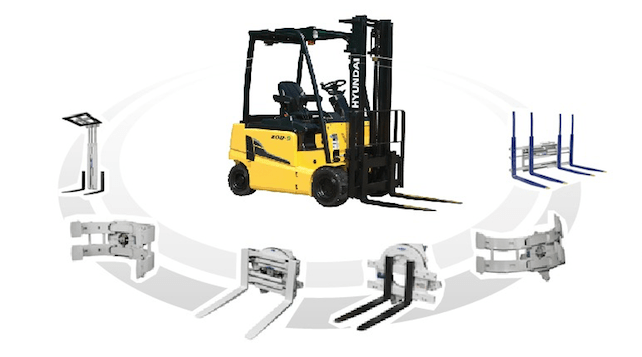Load Centre – This is the middle point of the load, calculated by measuring the length of the forklift attachment from front to back and then dividing by two. Most forklift truck manufacturers will state the load center at either 500mm or 600mm due to the size of standard shipping pallets – so for example the rated capacity might be 2,000kg at 500mm.
If your forklift attachment is longer (and therefore has a higher load center) then you’ll potentially need a forklift with a higher lifting capacity – in much the same way it’s harder to hold a heavy weight with your arms extended rather than close to your body, a higher forklift lifting capacity is needed if the center of the load is further away from the forklift itself.
It’s something worth bearing in mind right at the beginning of the process of choosing a forklift if possible, because if you’re looking to load or lift a large weight via a forklift attachment while using a relatively small forklift truck, the lifting capacity can be severely impacted.
Residual Capacity – Your forklift truck’s lifting capacity will be reduced once the forklift attachment is attached, and the level of this reduction will depend on the dimensions and weights of the truck itself, the attachment, and the load being handled.
Any good forklift manufacturer or supplier should be able to calculate residual capacity for you, to ensure the attachment you are intending to use and the load intended to be handled are within the safe operating limits of for your specific truck.

